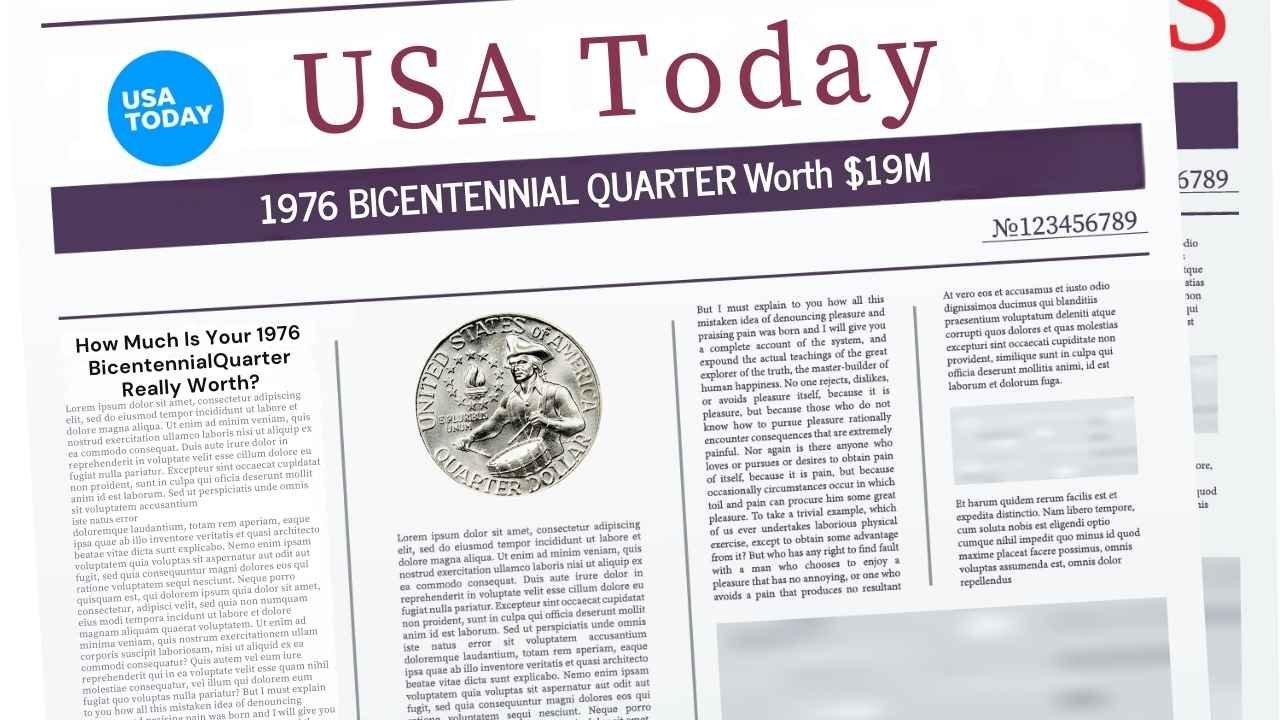Back in 1976, America threw the party of the century for its 200th birthday, and the U.S. Mint joined in with special quarters that still pop up in change jars today. These Bicentennial quarters swapped the usual eagle on the back for a cool image of a drummer boy marching with a torch and stars, all under the dual dates 1776-1976. Over a billion got made across Philadelphia, Denver, and San Francisco, so most folks see them as just 25 cents. But hold up—if yours is in top shape or has a funky flaw from the mint, it could fetch way more than pocket change. Coin hunters are buzzing as we near the 250th anniversary, turning old piggy banks into potential gold mines.
A Quick History Lesson on These Shiny Stars
The idea sparked in the early 1970s when Congress wanted coins to mark the big anniversary. They kept George Washington’s face up front but added the double date below his chin. The reverse, designed by a young artist named Jack Lofgren, shows that drummer symbolizing the spirit of 1776, with “E PLURIBUS UNUM” curving around. Philly and Denver cranked out the everyday versions in copper-nickel clad, while San Francisco handled silver proofs for collectors. These weren’t rare back then—kids collected rolls of them like baseball cards—but time has weeded out the beat-up ones, leaving gems for savvy searchers.
What makes them tick today? Condition is king. A worn quarter from your grandma’s couch might only snag face value, but one tucked away mint-fresh could pull in hundreds. And errors? Those are the jackpot tickets, like strikes on the wrong metal or missing marks that slip past quality checks. Recent sales show folks cashing in big, proving these aren’t just relics; they’re real money-makers if you know what to spot.
Everyday Value vs. the Big Scores
For the average Joe, most Bicentennial quarters hover right at 25 cents, especially if they’ve bounced around in wallets for decades. But uncirculated rolls from back in the day can go for a few bucks each, and proofs shine brighter with that mirror finish. Silver versions from San Francisco add a melt value bump if silver prices climb, but collectors pay extra for the story. The real excitement hits with rarities: off-center stamps, double dies, or that wild “struck on a dime” goof that’s topped $12,000 at auction.
Errors steal the show because they’re one-in-a-million flubs. Take the “No S” proof from San Francisco—missing the “S” mint mark—it routinely pulls five figures. Or the Denver double-die obverse, where Washington’s face looks doubled up, fetching over $3,000 in high grades. Even a simple off-center strike sold for $575 on eBay not long ago. These quirks happened during the mint’s busy bicentennial rush, and spotting them can turn a garage find into grocery money or more.
Value Breakdown at a Glance
Here’s a simple table of some key 1976 Bicentennial quarter values based on recent sales:
| Type/Variety | Grade/Condition | Approx. Value |
|---|---|---|
| Circulated Clad | Average Wear | $0.25 |
| Uncirculated Clad | MS65 | $5–$10 |
| Silver Proof | PR69 | $15–$25 |
| Off-Center Error | Moderate | $500–$600 |
| No S Proof | PR67 | $7,000–$20,000 |
| Struck on Dime Error | PR67 | $12,000 |
Prices can shift with market moods, so check current auctions for the latest.
Tips to Cash In on Your Find
If you’ve got a stash, start by sorting: look for that crisp shine and no scratches on uncirculated ones. Grab a magnifying glass for errors—check if the “D” mint mark looks filled or if the drummer’s details double up. No mint mark? Could be a Philly, worth a peek. For big bucks, send suspects to graders like PCGS or NGC; their seals boost trust and price. Online spots like eBay or Heritage Auctions show real sales, and local coin shops offer quick appraisals without the hassle.
These quarters remind us how everyday items hold hidden stories. While not every one will make you rich, the thrill of the hunt keeps collectors hooked. As we roll toward 2026, more eyes on these bits of history could drive values up. So next time you crack open that old coffee can, who knows? Your loose change might just fund a family vacation.
